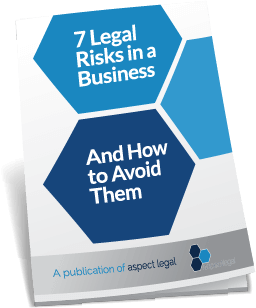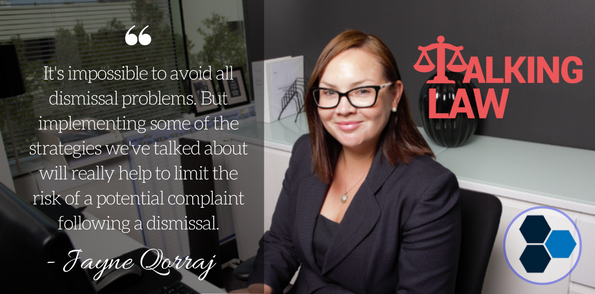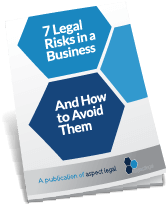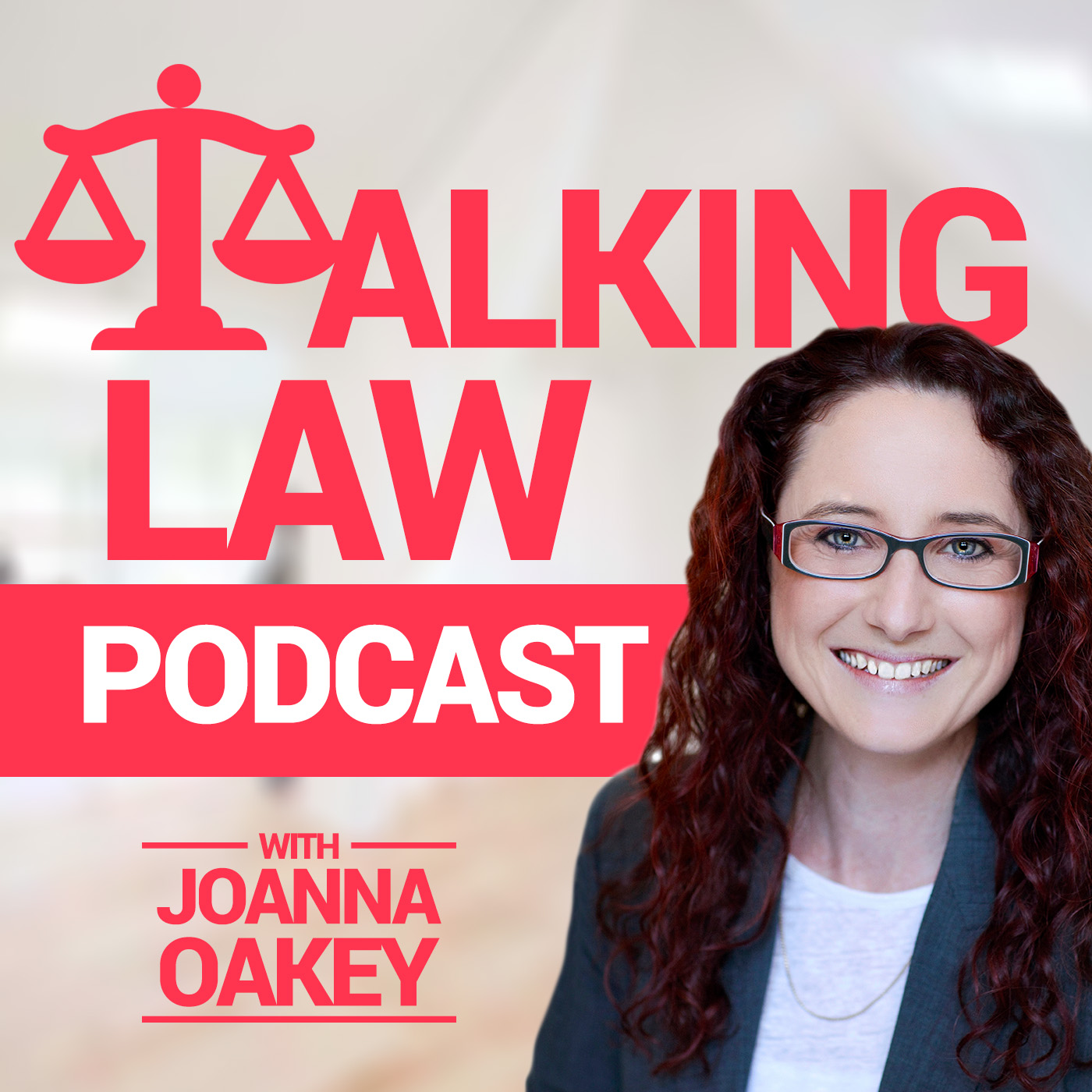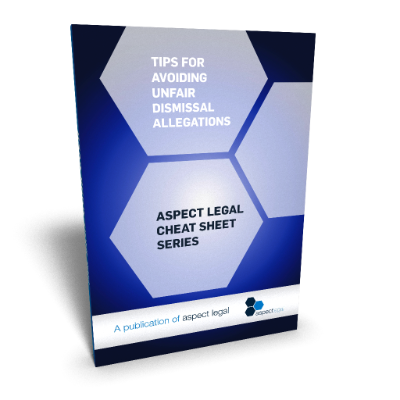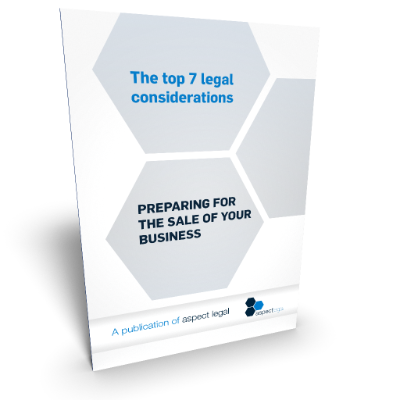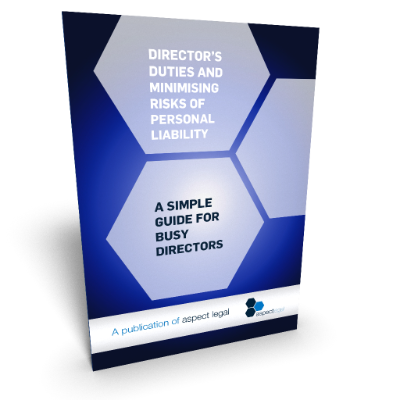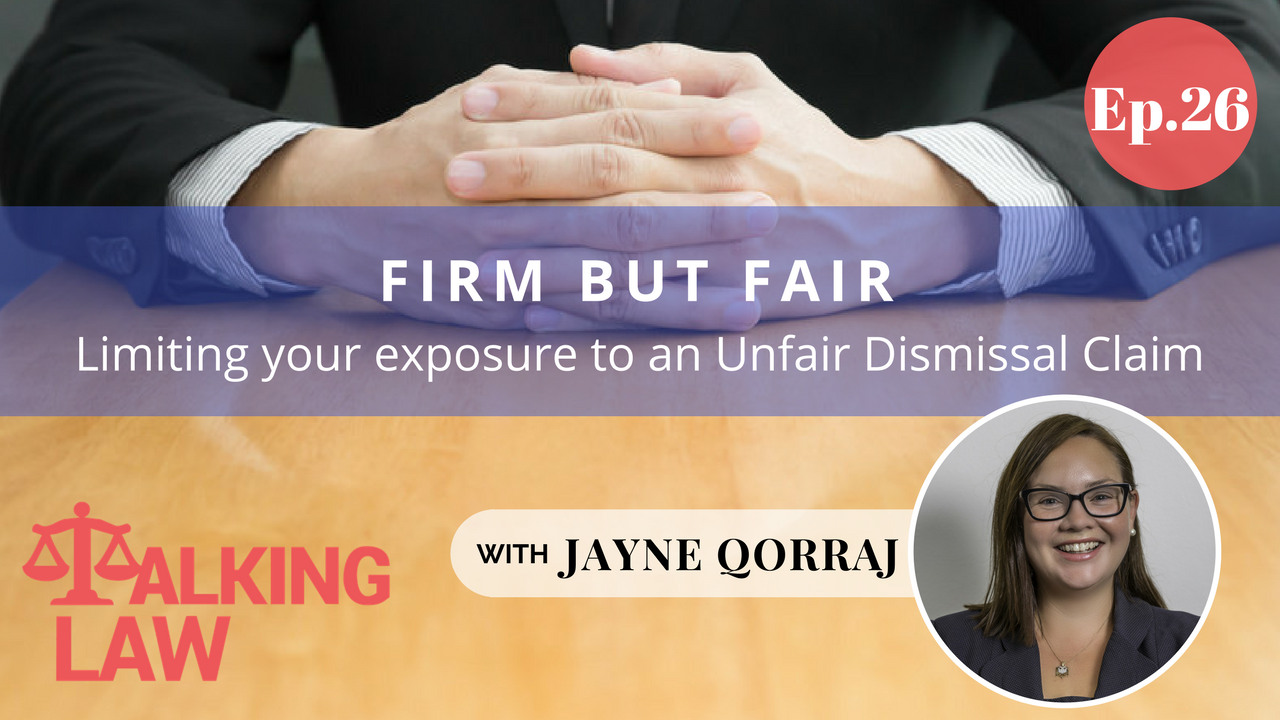
The issue of terminating employees can be a really difficult area for employers to navigate. And it’s an issue that comes up time and time again with our clients. To give this subject the proper treatment that it deserves, we have on board Jayne Qorraj, who heads up the Employment and Litigation division at Aspect Legal.

Episode Highlights:
- Navigating the Rough Terrains of Employee Terminations
- The Ease of Bringing an Unfair Dismissal Claim
- Treatment of Small Businesses vs Large Businesses
- Unfair Dismissal vs Unlawful Dismissal
- Careful with your Employment Contracts
- What You Should Remember about Termination
- The Mistake of Relying on Personal Relationships
- Failure to Keep Accurate Records
- Some Action Steps
Joanna: Hi it’s Joanna Oakey here and welcome back to Talking Law. Today we are talking about a really important issue for business which is tips for avoiding unfair dismissal claims. And in order for us to give this subject the proper treatment that it deserves. We have on board Jayne who heads up the Employment and Litigation division at Aspect Legal.
So Jane has extensive experience of decades acting for both employers and employees in relation to unfair dismissal claims and other issues relating to employment. So I thought she was the perfect person to have along today to talk about these really important issues. Hi Jayne, welcome along!
Jayne: Hi Joanna. Thank you.
Navigating the Rough Terrains of Employee Terminations
Joanna: Great. OK. I think this is a super important area for business to understand. What is it that you think in terms of unfair dismissal claims, why understanding this is important for business owners and business advisers?
Jayne: Look the issue of terminating employees can be a really difficult area for employers to navigate. And it’s an issue that comes up time and time again with our clients. It’s important that both the small business owners and also the managers and advisers in large corporates aren’t afraid to deal with their staff. So that can be in relation to performance or behaviour. It’s about knowing the right processes and having those processes in place to properly manage your staff and try and minimise the risk of your business being exposed to an unfair dismissal claim.
Joanna: Yeah, I think that’s a great point because one of the things that I’ve noticed over time is that clients will often contact us often when they’re at the point of dismissing a staff member and it’s only then that they realise for some reason that they haven’t fulfilled the process that they need to ensure in terms of making sure that dismissal isn’t going to raise risk for their organisation. But this to me then seems to operate in a way that they act one of two ways. Either one, they will dismiss the employee but then suffer the consequences if an employee files an action for unfair dismissal, or on the other hand, they’ll continue to accept underperforming staff behaviour because they’re too scared and they don’t understand what they can do. Is that the sort of thing that you’re seeing come through with our clients as well?
Jayne: Yes definitely. I think you know a couple of recent examples we’ve had where we’ve been contacted where, as you say, the employee has already been dismissed. And that was done obviously without serious consideration to the proper processes and procedures. And it’s much harder to then go back and try and rectify what’s already happened. Whereas if you’ve got the proper processes in place, your staff and your supervisors and managers know what they need to do and the process they need to follow to try and make sure that you don’t end up with a disgruntled worker who then wants to bring a claim.
Jayne: So I think the most important thing to remember is not only just to have these processes in place but to make sure that they are followed correctly and that the staff that are in charge of things such as recruitment, training, performance management, and ultimately dismissal are aware of these processes.
Joanna:I think that’s a really good point that you make, Jayne. It’s not just about understanding one person in an organization understanding these elements. It’s also about putting in place processes and training so that staff members throughout the organisation understand this area and have access to resources in this area.
In fact this reminds me of a conversation that I had a few months ago with an employee of a very large organisation who is a manager. At that point he was required to have a number of performance discussions with his staff members but without understanding what the risks are in relation to the discussions that he was having. And I thought it’s really interesting that even large organisations often fall short in making sure their employees, and managers importantly, understand what the things are that need to be said and recorded in meetings along the way, and how staff management needs to happen if you are leading to the point that termination may be required in the future.
The Ease of Bringing an Unfair Dismissal Claim
Joanna: Let’s then track back a bit. I guess the first thing, let’s talk about how a claim can be made by a disgruntled worker. How does it all work?
Jayne: In determining whether or not a termination was unfair, the Fair Work Commission will look at whether the termination was harsh, unjust, or unreasonable. So there’s a number of criteria that they’ll use in determining whether or not it’s been unfair.
Joanna: And I guess stepping back one step here. Here we’re talking about something that an employee or an ex-employee is claiming a termination. So it may not be an actual termination. We’ve of course had instances at our firm where employees have quit and then later argued that in fact it was constructive dismissal or termination by the employer. But there is an instance that occurs where there is termination or an alleged termination and then the ex-employee goes to Fair Work Australia and for a very small fee can lodge a claim. That’s how it all kicks off right?
Jayne: Yeah that’s right. Unfortunately for employers it’s very, very easy for the ex-employee to bring a claim. It’s all done online. It’s very easy for them to hop on and, as you say, pay a very nominal fee to commence the action. And once the action has commenced, employer has no choice but to then spend the time you know either dealing with it internally or you know obtaining advice as to how to proceed with that claim. And at the very least the employer is required to put in a response which will involve obviously detailing their side of the story, then the matters then are listed for conciliation hearing and that will happen regardless of whether or not you know it’s the case that the ex-employee really does have standing to bring a claim or in fact was unfairly terminated. So you can say that failing to properly navigate this area can really cause a lot of wasted time and expense and stress on businesses whether they’re large or small.
I guess the in essence what really needs to happen is that the organisation just needs to be geared up to deal properly with the dismissals. And that means that you need to start before these problems arise and do everything that you can to try and minimize the possibility that such a claim will be made.
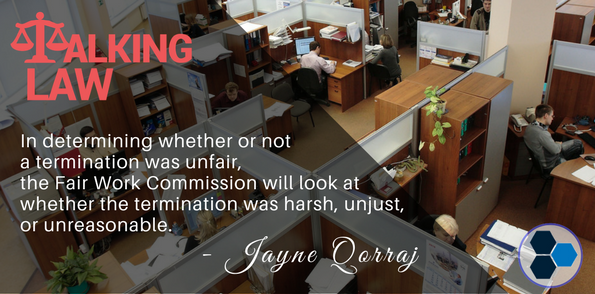
Joanna: Yeah absolutely such a good point you make about the ease of which an unfair dismissal claim can be brought. But then the amount of time and effort that is required once that action has kicked off, because that’s the thing that I find often businesses don’t understand until they’ve had the first episode occur in the business, because most businesses will at some point in their lifespan have a brush with unfair dismissal claims. It’s not at all unusual. So it doesn’t happen all the time in most organisations but it is something that, in most businesses, will rear its head at some stage potentially. And it’s not until business owners have been in that situation that they suddenly realise how costly and time intensive dealing with it can be because once it’s kicked off, it’s not up to you whether or not it continues. You’re forced into the process as Jayne says.
Treatment of Small Businesses vs Large Businesses
Joanna: Okay great. So then let’s talk about the size of business. The size of business of our listeners varies. We have many major corporates listening into this podcast but we also have quite a few small business owners so let’s talk about this issue in relation to each of those businesses separately. So firstly, small business. What’s different from them as opposed to large businesses?
Jayne: So in this context, small business means a business that is employing less than 15 employees. So once you get to that 15 or over mark, then you’re classified as a larger business. With a small business, the main difference in relation to whether or not an employee can bring an unfair dismissal claim is the length of service.
In small businesses, the employee has to have been working there for 12 months before they can make a claim. Whereas in larger businesses that period is reduced to six months. So as you can see, in small businesses if there are employees that haven’t been employed for that long, then obviously they’re not able to bring the claim.
The other thing with small businesses is there is a Small Business Fair Dismissal Code. And that sets up a process that should be followed when terminating an employee. So that can provide protection from an unfair dismissal claim where an employer can show that they’ve followed that code.
There are a number of steps and there are a number of questions if you like which prompts the employer to consider whether they’ve gone through the steps and allowed the employee an opportunity to rectify their behaviour or improve their performance before they’ve made the decision to terminate.
Joanna: OK. Great. All right. Let’s talk about the period of time that we have essentially an amnesty for a new employee could have access to this unfair dismissal regime.
Just to repeat. You said that for small businesses so business has less than 15 employees. There is a 12 month amnesty as it were in which an employee was terminated can’t bring an action from dismissal and six months for any organisation that’s not a small business. I think it’s probably good to also talk about the difference.
Unfair Dismissal vs Unlawful Dismissal
Joanna: Just because we’re saying that unfair dismissal claims can’t be brought, it doesn’t mean that other claims, like for example unlawful dismissal can’t be brought. And just very briefly if you could just touch on what unlawful dismissal is.
Jayne: Yes, so unlawful dismissal differs in that it is a claim that’s brought by an employee where there’s been some sort of discriminatory issue involved. So it may be that the person was dismissed and the reason for the dismissal was based on the person’s religion or racial background or whether they’re male or female or that type of thing rather than being strictly related to performance if you like.
Joanna: Great. OK. All right. And so unlawful dismissal doesn’t have this restriction for the employee to bring it for that period of six months or twelve months after first employee but unfair dismissal has that “amnesty period” I’m calling it. But I guess for business owners in their mind this is often what they see as the probationary period. Right?
Jayne: Yes. Yes, that’s correct. So again that’s one of the things to consider is just to make sure that you’re setting the right probation period. So that could be anywhere where say you know using those same markers between six and twelve months. But obviously that depends on the role and also the size of the business as to what would be considered appropriate.
Careful with your Employment Contracts
Joanna: Great. OK. And I guess the other thing to mention here is to be careful that your employment contracts don’t create a situation where you’re creating a contractual position that is harsher for you as the employer than the standard fair work position. Right?
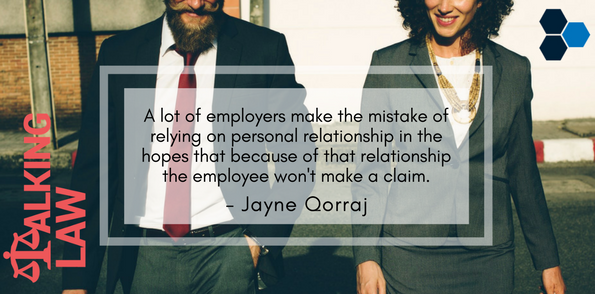
Jayne: Yeah, that’s correct. And I think that comes back to making sure that you’ve got those right employment agreements in place and also making sure that you are just aware of those National Employment Standards which will set the minimum requirements and as you say just making sure that you haven’t sort of gotten yourself into a position where it’s harsher for the employer.
What You Should Remember about Termination
Joanna: Great. OK. All right. So let’s then get to what is it that all businesses irrespective of size should be remembering about termination.
Jayne: I think the main thing to remember and we’ve touched on it it’s just that failure to be have the proper systems in place will just open the business up and increase the likelihood of a claim being brought. So it’s really important that you have these proper processes in place before these issues arise and to obviously make sure that your senior staff or the staff that are dealing with the employees on a regular basis well equipped to deal with any situations that may arise and are also well aware of what those expectations are in terms of recording things to do with performance management, internal meetings, and the like.
The Mistake of Relying on Personal Relationships
Joanna: Right. OK. All right. Fabulous. So I guess one thing that might be really useful to our audience is to hear the sorts of themes that we’re seeing with our clients at the moment. So what are you hearing at the moment Jayne in relation to those themes that are coming through with our clients currently?
The sorts of things that we’re seeing where employees have been employed for a long time and that employment relationship then can become quite a personal relationship. And I think a lot of employers make the mistake that they’re relying on that personal relationship in the hopes that the relationship won’t sour and that if something happens between the employer and the employee that because of that relationship the employee won’t go ahead and make a claim. I think we’ve certainly had instances where that’s been the case with our clients.
And I was going to say I think that’s a great area for businesses just to be wary of because I feel that often when I speak to businesses about these areas sometimes I’ll get a response you know we’ve had our stuff for a long period of time, we’ve got a close relationship and so that’s fine we don’t need to talk about this area. But then subsequently things change with these employees and years down the track their family situation might be different to how it was during the period of the previous employment or you know other things might occur that suddenly changed that relationship. And if you don’t have the processes in place it can be a rude shock to find that an employee has brought an action because you haven’t had these processes in place and I think it’s probably really good business practice anyway to have good processes in place to deal with employees and employment related issues to ensure that you can jump on issues before they turn into anything bigger. So what are the things you’re seeing as well?
Failure to Keep Accurate Records
Jayne: We definitely see a recurring theme in terms of a failure to keep accurate records. So particularly when that relates to performance improvement and warnings. So it may be that it employee’s been given a verbal warning saying you know you really need to increase your performance, you’re not hitting your markers. But then there’s been no record of that meeting. There’s been nothing in writing given to the employer to say, “Hey look we confirmed this what we discussed, this is what we expect. We’re giving you six months or whatever the appropriate time frame is to see some improvement, failure to see some improvement may then result in further warning,” that type of thing. So it’s just essential to keep a record of all these discussions related to performance, any performance improvement plan. That are put in place. And of course any follow up action that’s been taken.
Some Action Steps
Joanna: Great. Okay. I think that’s really good advice. So how about out of that let’s let the listeners know the action items that relate to how they can set up processes within their organisations to reduce the likelihood of issues occurring.
Jayne: Sure. I mean there are a number of things that can be done a couple of them we’ve touched on already. But I guess the first one is just to be clear in specifying what’s expected from new employees. You may want to have a process that sets out the on-boarding of new employees. And just be really clear let them know what your expectations are. And of course the accountabilities also.
I guess the next thing is to make sure that you have company policies in place that all deal with important areas such as social media what not to do on social media, bullying, harassment and those types of things. We want to make sure that they’re clearly written and also make sure that they’re readily available in the office and that the employees know where they are.
Another item is definitely, which we’ve touched on earlier, just to make sure you’ve got the right employment agreement in place and make sure they’re always up to date.
Joanna: That’s a good point because legislation changes so it’s really important that businesses regularly have templates reviewed that they’re using to make sure they’re using the right template.
Jayne: That’s correct. And also make sure that they’re aware of any applicable award or industry code or standard that might be applicable to their particular business.
Joanna: Great!
Jayne: I guess another item is that we have touched on earlier is just to determine who has the power to hire and fire. So you just want to make sure that your managers or your supervisors or whoever you deem to be in charge in your business has a clear idea about who is responsible for certain things so disciplinary action, termination, and just make sure that they’ve had the adequate training whether that’s getting your in-house to do seminars or getting some legal advice and guidelines around expectations which is just really important that they understand what they can and can’t do and what they should and shouldn’t say more importantly.
Joanna: Great. And so for large businesses they’ll probably have teams who create that and if they don’t know our team at Aspect Legal can help with that. Smaller businesses often feel that they’re more on their own in this area and also that they don’t have the resources to put these sort of training together. So I guess the point here is that it can be very easy. All you need to do is seek the appropriate advice and the tools can be provided to you. So don’t put this into the too hard basket. Seek advice. Seek help. And get the right tools on board so that you can then communicate it to the right people in your staff.
Jayne: Yeah that’s right and I think another item that often businesses will overlook is having a system in place for performance management. So again just making sure that those staff who are involved in disciplining and managing a team if you like or a number of staff have a system in place, they’re aware that they’re supposed to keep appropriate notes of all discussions they have and basically making sure there’s a record of you know a record kept of anything that could possibly affect the employment relationship in the future of course especially if dispute arises.
Joanna: Yeah. And it’s interesting in this world of email now. Often many discussions I had via email but this also means that if records are in email they can be hard to find in the future and indeed often with the plethora of information that we have in our computers these days. Even digital notes can be lost as well so. And let’s not get started on hardcopy note. So the point is to have systems in place so that wherever it is that you’re recording the details of these discussions that have taken place they can be found in the future when they’re needed rather than being lost in paper or digital forms somewhere. Right. Okay. So. So that’s all the action steps for reducing the likelihood of issues occurring in the first place which is super important. It’s part of the prevention is better than cure.
But what if an issue is already there? What if you’ve got an employee that is not performing and you want to work out how to terminate? What do our listeners need to be aware of if they’re staring down the barrel of needing to think about a termination in the very near future?
Jayne: Well I guess the first thing is that it’s really important that there is no delay in making the decision. So in the majority of cases there will be a need to issue warning letters and that process can take some time. So as you said if they’re looking at an employee and thinking well these things have happened in the past or whatever it is that it’s led up to and they want to terminate. You still just need to make sure that whilst you don’t delay making the decision you want to make sure you follow the proper processes so there’s no real rule but it’s advisable to give at least two warning letters. And that would then be followed by a Final Warning Letter and then ultimately the dismissal if there is no improvement. I guess the most important thing to remember with giving the warning letters is that you want to give the employee a chance to respond or a chance to state their case once you raised the issue. And then of course make sure you give them adequate time to rectify the issue.
If you’ve run that horse and you’re at the point of giving the final warning and ultimately dismissing, once again you really need to put forward the reason for the proposed dismissal so that’s a big thing that the commission will look at if a claim is brought is whether or not there was a valid reason given for the dismissal, whether or not that was communicated clearly to the employee, whether they were given a chance to respond, and that all needs to be done before you’ve made your final decisions. So even where in your own mind you made the decision that this person needs to be terminated, you still need to follow the process where you’re allowing them the opportunity to respond before making that final decision.
Joanna: Right. OK. Fabulous. I think that’s really, really poignant things for our listeners to be aware of. And I think we’re almost at the end here. Do you have any last minute tips for our listeners, Jayne?
Jayne: Oh look I think ultimately it’s incredibly difficult, it’s actually impossible to avoid all dismissal problems but implementing some of the strategies we’ve talked about, some of those key action items will really help to limit the risk of a potential complaint following a dismissal.
Joanna: Great. Wonderful. Look I think this has been really useful content both in assisting small businesses and large businesses alike to ensure that they have set up the right processes to reduce the likelihood of employment and unfair dismissal claims occurring. And if they have occurred and they are in place at the moment, we had some really great pointers about what you should be doing right now. Taking action now not delaying your decision to ensure that you’re protecting the business as much as possible.
Thanks so much for coming in Jayne. And thanks so much to you the listeners for listening in. If you’d like more information about this topic please head over to our website at talkinglaw.com.au. Through that website you’ll also be able to download a transcript of this podcast episode if you’re so interested in this area of employment and unfair dismissals that you want to read it in more detail. On that page you’ll also find details of how you can contact our lawyers at Aspect Legal, if you’d like help with any of the items that we covered today.
And finally if you enjoyed what you heard today, please pop over to iTunes and leave us a review. We’d be extremely grateful. And please also share this podcast because we feel like this is useful information for businesses out there to hear and they’ll only get it if our listeners share. Share the love. So thanks for listening in. We’ll see you next time. You’ve been listening to Talking Law.
